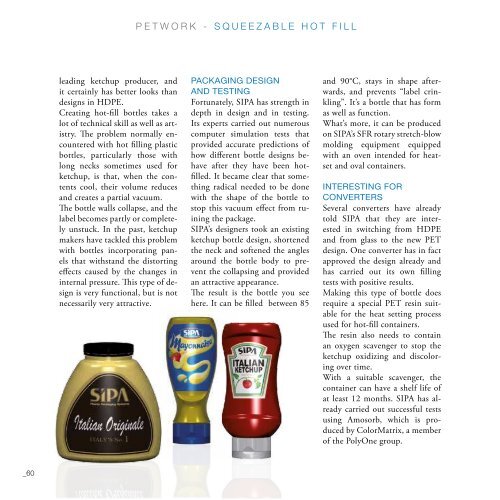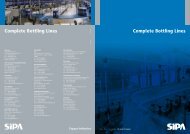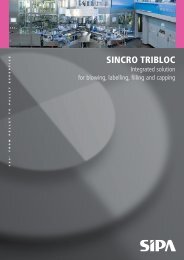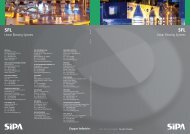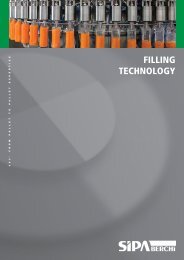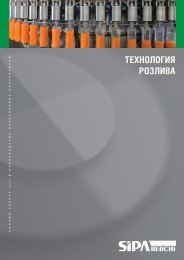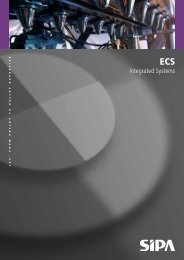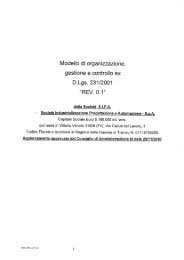C14_SIPA Magazine_issue4_2013_uk.pdf
C14_SIPA Magazine_issue4_2013_uk.pdf
C14_SIPA Magazine_issue4_2013_uk.pdf
Create successful ePaper yourself
Turn your PDF publications into a flip-book with our unique Google optimized e-Paper software.
_60<br />
leading ketchup producer, and<br />
it certainly has better looks than<br />
designs in hdPe.<br />
Creating hot-fill bottles takes a<br />
lot of technical skill as well as artistry.<br />
The problem normally encountered<br />
with hot filling plastic<br />
bottles, particularly those with<br />
long necks sometimes used for<br />
ketchup, is that, when the contents<br />
cool, their volume reduces<br />
and creates a partial vacuum.<br />
The bottle walls collapse, and the<br />
label becomes partly or completely<br />
unstuck. in the past, ketchup<br />
makers have tackled this problem<br />
with bottles incorporating panels<br />
that withstand the distorting<br />
effects caused by the changes in<br />
internal pressure. This type of design<br />
is very functional, but is not<br />
necessarily very attractive.<br />
PetWorK - squeeZaBle Hot Fill PetWorK - squeeZaBle Hot Fill<br />
pAcKAging Design<br />
AnD testing<br />
fortunately, siPa has strength in<br />
depth in design and in testing.<br />
its experts carried out numerous<br />
computer simulation tests that<br />
provided accurate predictions of<br />
how different bottle designs behave<br />
after they have been hotfilled.<br />
it became clear that something<br />
radical needed to be done<br />
with the shape of the bottle to<br />
stop this vacuum effect from ruining<br />
the package.<br />
siPa’s designers took an existing<br />
ketchup bottle design, shortened<br />
the neck and softened the angles<br />
around the bottle body to prevent<br />
the collapsing and provided<br />
an attractive appearance.<br />
The result is the bottle you see<br />
here. it can be filled between 85<br />
and 90°C, stays in shape afterwards,<br />
and prevents “label crinkling”.<br />
it’s a bottle that has form<br />
as well as function.<br />
What’s more, it can be produced<br />
on siPa’s sfr rotary stretch-blow<br />
molding equipment equipped<br />
with an oven intended for heatset<br />
and oval containers.<br />
interesting for<br />
converters<br />
several converters have already<br />
told siPa that they are interested<br />
in switching from hdPe<br />
and from glass to the new PeT<br />
design. one converter has in fact<br />
approved the design already and<br />
has carried out its own filling<br />
tests with positive results.<br />
Making this type of bottle does<br />
require a special PeT resin suitable<br />
for the heat setting process<br />
used for hot-fill containers.<br />
The resin also needs to contain<br />
an oxygen scavenger to stop the<br />
ketchup oxidizing and discoloring<br />
over time.<br />
With a suitable scavenger, the<br />
container can have a shelf life of<br />
at least 12 months. siPa has already<br />
carried out successful tests<br />
using amosorb, which is produced<br />
by ColorMatrix, a member<br />
of the Polyone group.<br />
_61


